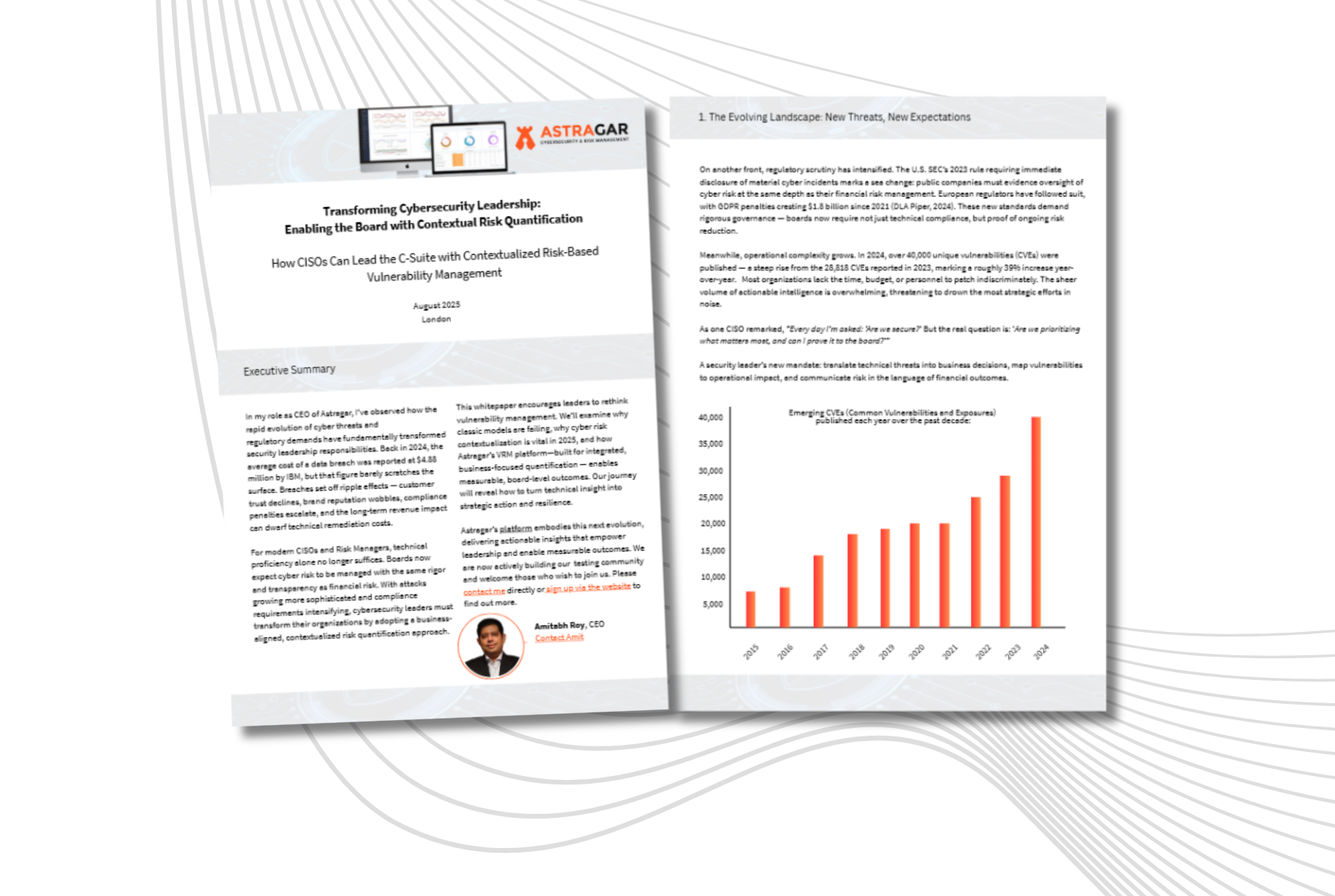
Every company today claims to be data-driven – yet when it comes to cybersecurity, most are simply data-drowned.
Dashboards multiply, reports expand, alerts never stop, and still, leaders struggle to see what truly matters.
The problem isn’t the lack of data – it’s the lack of context.
In every boardroom conversation, there’s one quiet truth that rarely gets voiced: we’re investing millions into monitoring and compliance, but we still can’t answer one simple question – “What does this risk actually mean for our business in pounds and dollars?”
The Noise vs the Narrative
Security teams are overwhelmed by alerts. Analysts spend half their time investigating issues that don’t move the needle. Executives receive beautifully coloured dashboards that say everything … and nothing.
Somewhere between the technical and the financial, between “critical CVSS scores” and “critical business risk”, the message gets lost.
What if we stopped measuring risk in technical language and started speaking the language of value, loss, and resilience?
From Metrics to Meaning
When we quantify cyber risk not just track it everything changes.
It’s no longer about how many vulnerabilities exist, but which ones drive actual financial exposure.
Imagine being able to say to your board:
“This single vulnerability represents £1.4M of potential loss. These three combined account for 80% of our exposure. Let’s fix these first.”
That’s not another dashboard. That’s decision intelligence.
The New Role of Data: Context
In business, we’ve already seen this shift before:
- Marketing evolved from impressions to ROI.
- Operations moved from tasks to efficiency.
- Finance from numbers to insights.
Cybersecurity is next. The future isn’t in more tools or more alerts it’s in understanding which data matters most, and why.
At Astragar, we believe data without context is noise and noise is expensive.
Our mission is to help organisations translate cyber data into financial clarity, so leaders can prioritise the 10–20% of risks that drive 80–90% of exposure.
Because clarity isn’t just power – it’s protection.
Closing Thought
Every business today sits on a mountain of data.
The winners will be those who learn not just to collect it, but to contextualise it, turning information into action, and risk into strategy.
So maybe the question isn’t whether we have enough data.
Maybe it’s whether we have the right lens to see what really matters.
Written by Dali Wiens, Chief Revenue Officer. Contact Dali here.



